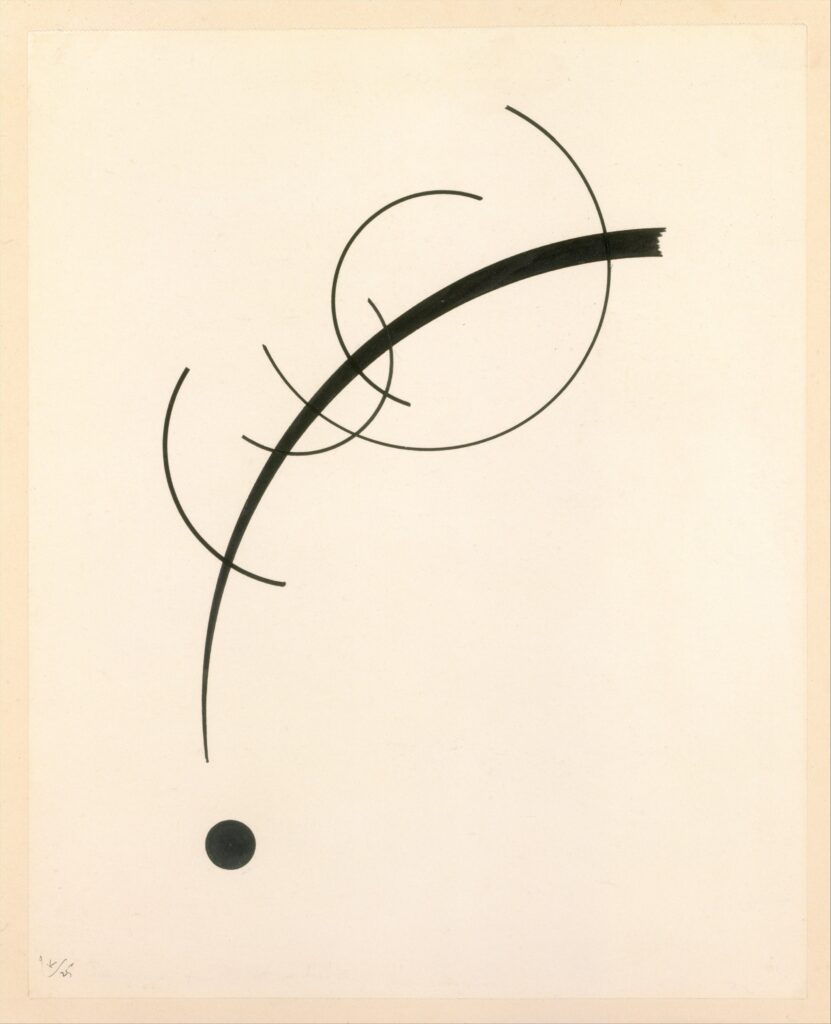Beyond Kandinsky’s Point, Toward an Embodied Field of Perception
At a time when digital images multiply endlessly and circulate faster than our capacity to absorb them, it is tempting to return to the origins of visual form — to the point. In Point and Line to Plane, Wassily Kandinsky elevated the point as the most elemental unit of visual language. For him, the point is a minimal tension, a pure form of silence, a spatial mark of spiritual significance. It is mental, immaterial, abstract — the beginning of all expression.
But what if we approach the point not as origin, but as limit?
In his book Corpus, philosopher Jean-Luc Nancy invites us to move beyond the idea of the body as a coherent organism or chaotic mess. The body, Nancy writes, is a corpus: a collection of fragments, an open archive, a site of exposure. From this dispersed, plural, decentered body, he opens a new possibility for thinking the image.
One of Nancy’s most radical gestures is the idea that to exist is to exit the point. Rather than anchoring ourselves as subjects fixed in a point of view — as linear perspective taught us — Nancy shows that existence happens along the tangent, in movement, in being-with. The point, once seen as origin and order, is revealed to be a fiction: closed, static, disembodied.
In this gesture, Kandinsky’s point is gently overturned — not rejected, but transformed. His abstract purity becomes, in Nancy’s philosophy, a porous intensity. What was once a mark of inner spirit becomes a vector of contact. Instead of generating meaning from the inside out, the image now emerges at the border: in sensation, in matter, in the trembling edge between self and world.
This resonates deeply with Hito Steyerl’s critique of single-point perspective in her video essay In Free Fall. She proposes a vision no longer grounded, no longer stable — a vertical or falling perspective where subjects float, disoriented, unanchored. Here too, the point is abandoned. Not as failure, but as liberation.
And with Mark B. N. Hansen’s New Philosophy for New Media, we find the same refusal of the point as locus of representation. Hansen argues that the image is not something we see, but something we do with the body. It is affective, temporal, embodied. “The image becomes the body’s process of perceiving it,” he writes. Vision is not clean; it is generative, chaotic, and alive.
At The Somatic Image Lab, we join this movement away from the point.
Away from clarity.
Away from the central eye.
And toward the field — the open, vibrating, unstable field where images are not delivered to us, but emerge with us.
We want to think through images together.
From contact, not distance.
From trembling, not control.
From exposure, not representation.
Where Kandinsky saw the point as the origin of visual meaning,
we see it as a threshold to pass through.
Not a dot of perfection, but an opening.
A somatic event.
A line of escape.
